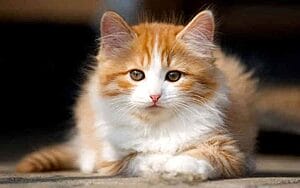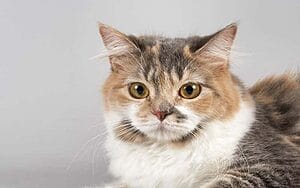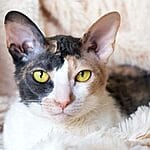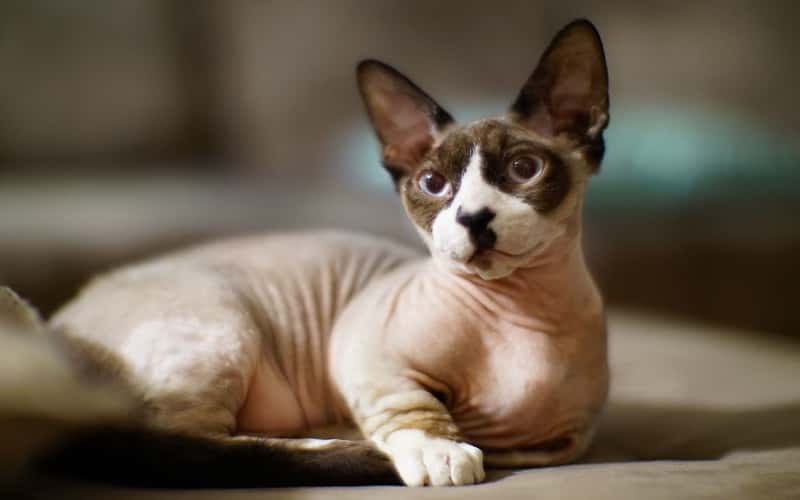Cymric – Mixed Cat Breed Characteristics & Facts

When you have a Cymric around the house, you have a “watchcat” who reacts quickly, growls menacingly, and may even launch an attack at the sight or sound of anything unusual.
Below are all the characteristics of Cymric!
Cymric Mixed Cat Breed Picture




Cymric – Mixed Cat Breed Characteristics
Affectionate with Family | ***** |
Amount of Shedding | **** |
General Health | *** |
Potential for Playfulness | |
Tendency to Vocalize | ** |
Kid-Friendly | *** |
Friendly Toward Strangers | **** |
Easy to Groom | ** |
Intelligence | **** |
Pet Friendly | *** |
Vital Stats:
| Life span: | 8 to 14 years |
| Length: | 14 to 18 inches |
| Weight: | 8 to 12 pounds |
| Origin: | Isle of Man, UK |
History
If a cat doesn’t have a tail, is it really a cat? If it’s a Cymric (pronounceable “kim-rick”), then yes. Many cats have short tails or none at all, but only the Cymric (and his sister breed, the shorthaired Manx) were designed from the beginning to be tailless.
These particular tailless cats are the result of a natural genetic mutation that was then amplified by their remote location on the Isle of Man, off the coast of Britain, despite the fact that they are sometimes jokingly claimed to be the offspring of a cat and a rabbit (however adorable the idea, a “cabbit” is biologically impossible).
It is unknown whether a tailless cat was born there or arrived on a ship and then spread its genes throughout the island cat population. The cats are thought to date to 1750 or later. The Manx cat breed got its name because the island became well-known for its tailless cats. The Cat Fanciers Association, The International Cat Association, and other cat registries have long recognized The Manx.
In 1994, CFA approved a longhaired variety as a Manx division. The longhaired Manx is referred to as a Cymric and is regarded as a distinct breed by some associations.
Size
When lifted, this medium-sized cat, which weighs 8 to 12 pounds, feels surprisingly heavy.
Personality
Whether they have long or short hair, these cats, who were originally mousers, still possess excellent hunting prowess and a watchful disposition. You don’t need a watchdog when you have a Cymric around the house; instead, you have a “watchcat” who reacts quickly and will growl menacingly or even launch an attack at the sight or sound of anything unusual. If he notices that you are not alarmed, he will calm down again.
The Cymric, however, is a laid-back cat who enjoys peaceful surroundings when he’s not defending his family and property from mice, stray dogs, or other threats. But that doesn’t mean he is inactive. This cat is joyful and playful, and he enjoys helping his favorite person around the house and with whatever task that person is working on. The Cymric, however, will be in your lap and prepared for a cozy nap when you are ready to unwind.
If there isn’t a lap available, he will curl up in the closest place that allows him to watch you. He will engage in conversation with you and “speaks” in a low trill. If the Cymric is exposed to activity and a large number of people when he is a young kitten, he has an adaptable nature. He can easily adapt to a new home or family if such a change in his life is required.
He will enjoy meeting new people and greeting them with a gentle head butt or cheek rub. This cat is intelligent, capable of learning tricks like fetch and come, and if trained early, will be willing to walk on a leash. He frequently enjoys riding in the car, which makes him an excellent travel companion. Make sure that anything you don’t want him to have is kept under lock and key because he is good at learning how to open doors.
Unlike most cats, the Cymric is willing to respect boundaries and will typically stop jumping on the counter or scratching on your furniture if you say no. Just make sure you offer him a suitable substitute as payment for his polite behavior. The Cymric is very focused on people. Only pick him if you can give him a lot of daily time and attention.
Health
Pedigreed and mixed-breed cats both have varying rates of health issues that could be genetic in origin. Although Cymric dogs generally have good health, the following illnesses have been reported in the breed:
- Cats with partial tails and tailbone arthritis
- When a kitten is about 4 months old, the development of cloudiness in the cornea starts.
- Manx syndrome is a group of birth defects that may include a short spine, urinary tract issues, and gastrointestinal and bowel issues. A good reason to hold off until a Manx kitten is 4 months old before bringing one home is that the condition, which most frequently manifests as rumpies, affects about 20% of Manx cats.
Care
A few times a week brushing or combing will help to remove dead hair and distribute skin oil from the Cymric’s coat. To stop the cat from smearing poop on carpets or furniture, carefully inspect the back end to make sure that no feces are stuck to the fur around the anus. If necessary, clean it. To prevent periodontal disease, brush your teeth. Although daily brushing is preferred, once a week is still preferable to never.
To get rid of any discharge, use a soft, damp cloth to wipe the corners of your eyes. To prevent the spread of any infection, use a different area of the cloth for each eye. Each week, check your ears. If they appear to be dirty, clean them with a cotton ball or soft, damp cloth dipped in a 50/50 solution of warm water and cider vinegar. Cotton swabs shouldn’t be used because they can harm the ear’s interior. Maintain a spotless litter box.
Cymrics are extremely particular about bathroom hygiene, just like all cats. A Cymric should only be kept indoors in order to protect him from illnesses spread by other cats, dog or coyote attacks, and other risks that cats who go outside face, like being hit by a car. Cymrics who venture outside also run the risk of being taken by a person who wants to own such a stunning cat without having to pay for it.
Coat Design and Maintenance
Although the Cymric is renowned for lacking a tail, not all of them are completely tailless. Some have normal-length tails, known as “longies,” while others, known as “stumpies,” have short tails. A Cymric without a tail is referred to as a “rumpy,” and one with only a rise in the spine’s bony portion is called a “riser.” In the show ring, you will only see rumpies and risers, but Cymric breeding programs can make use of cats with tails.
Other distinguishing features of a Cymric include a round head with large round eyes, a powerful body with a broad chest, short back, and broad, round rear end, as well as short front legs and long, muscular hind legs. He looks like a rabbit because of the length of his back legs, which is possibly where the term “cabbit” came from.
The Cymric has a double coat that is long, soft, and silky and comes in a wide range of hues, including various solids, tabbies, tortoises, and calicos. The pointed Himalayan pattern, as well as the colors chocolate and lavender, are prohibited. The fur on the belly, upper rear legs (known as breeches), and neck ruff is typically longer than that on the rest of the body.
The coat gradually lengthens from the shoulders. The neck ruff forms what appears to be a bib on the chest and wraps around the shoulders. Numerous Cymrics also have furry tufts on their ears and toes. The Cymric can occasionally appear longer than the Manx due to the long hair, especially over the rear, but this is just an optical illusion. Because of his slow growth, the Cymric might not reach his full size until he is five years old.
Kids and other animals
The energetic and sociable Cymric is a great option for households with kids and dogs who get along with cats if he is introduced to them when he is a kitten. He can play fetch just as well as any retriever, picks up new tricks quickly, and enjoys the attention from kids who are kind to him. He coexists peacefully with cats, dogs, and fish, all of which are able to learn to respect his authority.
A Cymric adult who has grown accustomed to a quiet home may not be as amenable to children. To make sure that pets learn to get along with one another, always introduce pets gradually and under controlled conditions.
Creator: PetsCareTip







